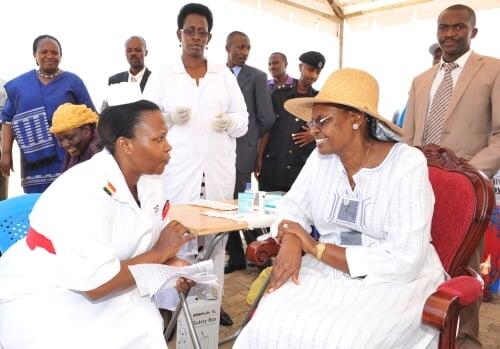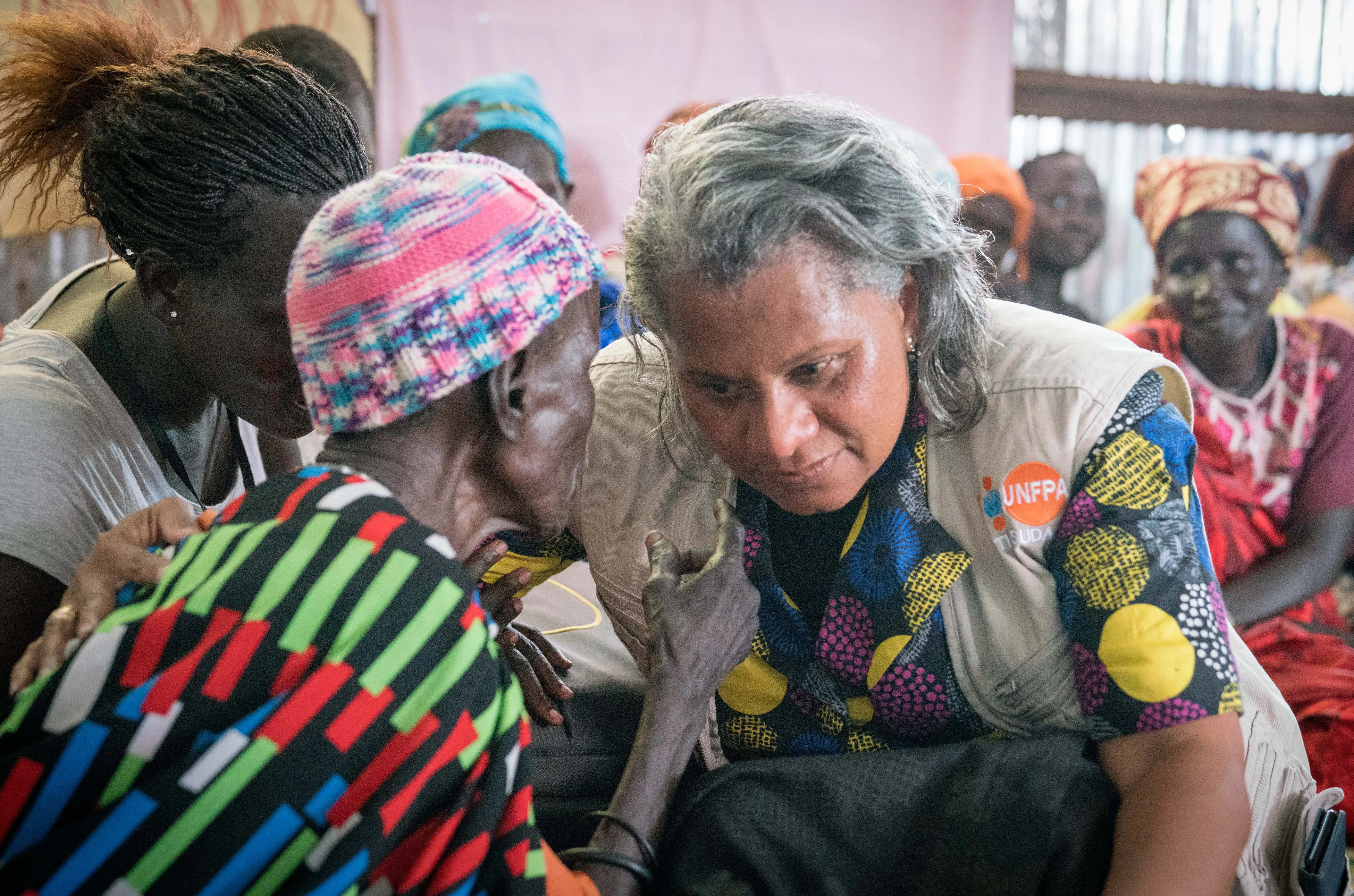KAMPALA, Uganda, 28 February - The First Lady of the Republic of Uganda, Janet Kataaha Museveni, has launched the Elimination of Mother-to-Child Transmission of HIV (EMTCT) national campaign in the Ugandan capital of Kampala.
This is the fifth regional launch supported by the United Nations Population Fund (UNFPA) following launches in South West Uganda in March, mid-north region in June, the eastern region in August, and Karamoja region in September last year.
The campaign is meant to ensure that there is no transmission of HIV from a pregnant mother to her baby, in order to achieve a generation free of HIV by 2015.
“The message we want to send out here today is that no Ugandan child should ever again be born with HIV,” the First Lady said.
In her capacity as the national champion of the campaign, she agreed to do a public test for HIV in the presence of UNFPA Representative Esperance Fundira, WHO Representative Dr. Alemu Wondimagnenhu, UNAIDS Country Coordinator Musa Bundugu, Cabinet Ministers, Members of Parliament and district leaders, as an example to encourage universal voluntary counselling and testing for HIV.
During the launch, 31-year-old Rachael Komugisha, who was born HIV positive in 1982, gave her testimony of how a tablet saved her baby from HIV.
“I was so happy when I delivered a bouncing baby girl. My daughter is now two and a half years old and she is HIV free. We can indeed have an HIV-free generation,” she said.
In her speech, the First Lady advised all mothers to find out their HIV status by visiting antenatal care services four times during pregnancy. She said the campaign has ignited a flame that needs to keep burning to ensure the elimination of HIV among babies and challenged partners to be more creative and innovative.
“There is hope for those who are living with HIV. They must know that they can have HIV-free families and that will give them a new hope and a new life,” she said.
Acting on behalf of the UN Resident coordinator, UNFPA Country Representative Esperance Fundira commended the national leadership for the commitment and national EMTCT efforts that are resulting in fewer HIV infections among exposed babies.
“As the UN, we commend the First Lady for her strong and focused leadership as the champion of the campaign for the Elimination of Mother-to-Child-Transmission of HIV in Uganda. It is encouraging to see that efforts to save the lives of thousands of Ugandan children who might have been born with HIV have received such high level support,” she said.
She called for expanded focus on primary HIV infection; preventing unintended pregnancies that can potentially reduce EMTCT rates by half; preventing teenage pregnancies to improve women’s health and promote their empowerment; strengthening the health system and especially the MNCH platform; and increasing domestic investments for HIV.
“It is this kind of leadership and commitment that we believe will see us make the elimination of mother-to-child transmission of HIV a reality,” Ms. Fundira said.
The 2011 Uganda AIDS Indicator Survey shows that 7.3 per cent of adults in Uganda are living with HIV and an estimated 145,000 new infections occur each year, of which 16,000 occur through mother-to-child transmission. Without access to necessary care and life-saving ARVs, roughly one third of children born to HIV-positive mothers become infected and will die by their first birthday.
Uganda has implemented the Prevention of Mother-to-Child Transmission (PMTCT) strategy since 2000. In 2012, the Ministry of Health adopted a new policy of testing, renamed Elimination of Mother-to-Child Transmission (EMTCT),which put all pregnant and lactating women living with HIV on life-long treatment irrespective of their CD4 status. The treatment is three drugs combined in one pill.
According to Dr. Ruth Acheng, Director General of Health Services in Uganda, many pregnant women have been reached and are testing for HIV. Those infected have been enrolled on preventive therapy, and many more are on life-long HIV treatment. As a result, many children born of infected mothers are now free from HIV.
“It is estimated that in 2009, there were 22,000 babies being born (each year) with HIV. This number reduced to 15,000 in 2012. We should be counting to zero by 2015,” Dr. Acheng said.
“Such success stories show that it is possible to bring mother-to-child transmission down to zero. And with the same level of political partnership and leadership, Uganda is poised to reach the elimination targets by 2015,” Ms. Fundira said.
The EMTCT programme in Uganda is spearheaded by the Ministry of Health (MoH) and implemented with support from a range of partners, including UNFPA, UNICEF, UNAIDS, WHO, USAID, CDC, PEPFAR and DFID.
UNFPA has supported the design and implementation of the campaign and has also provided support to the Organization of African First Ladies Again AIDS in Africa (OAFLA), Uganda Chapter.
~ Evelyn Kiapi and Rosemary Kindyomunda





